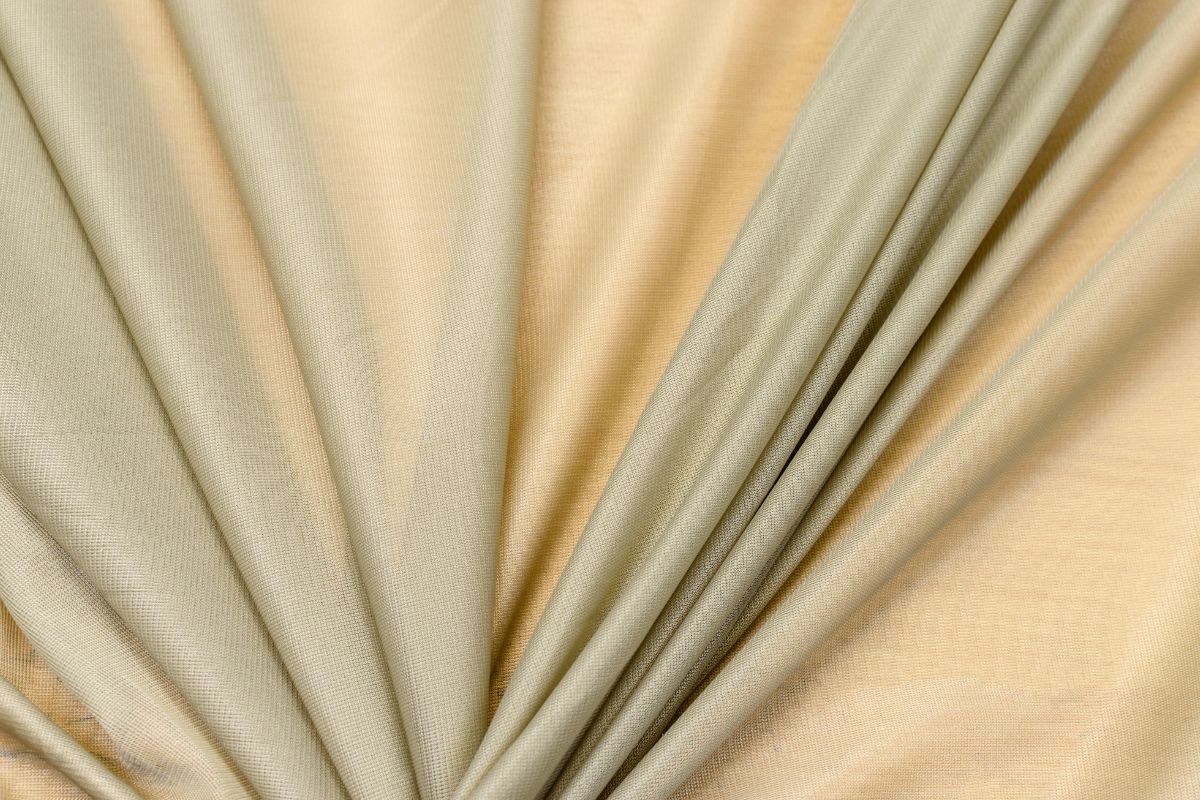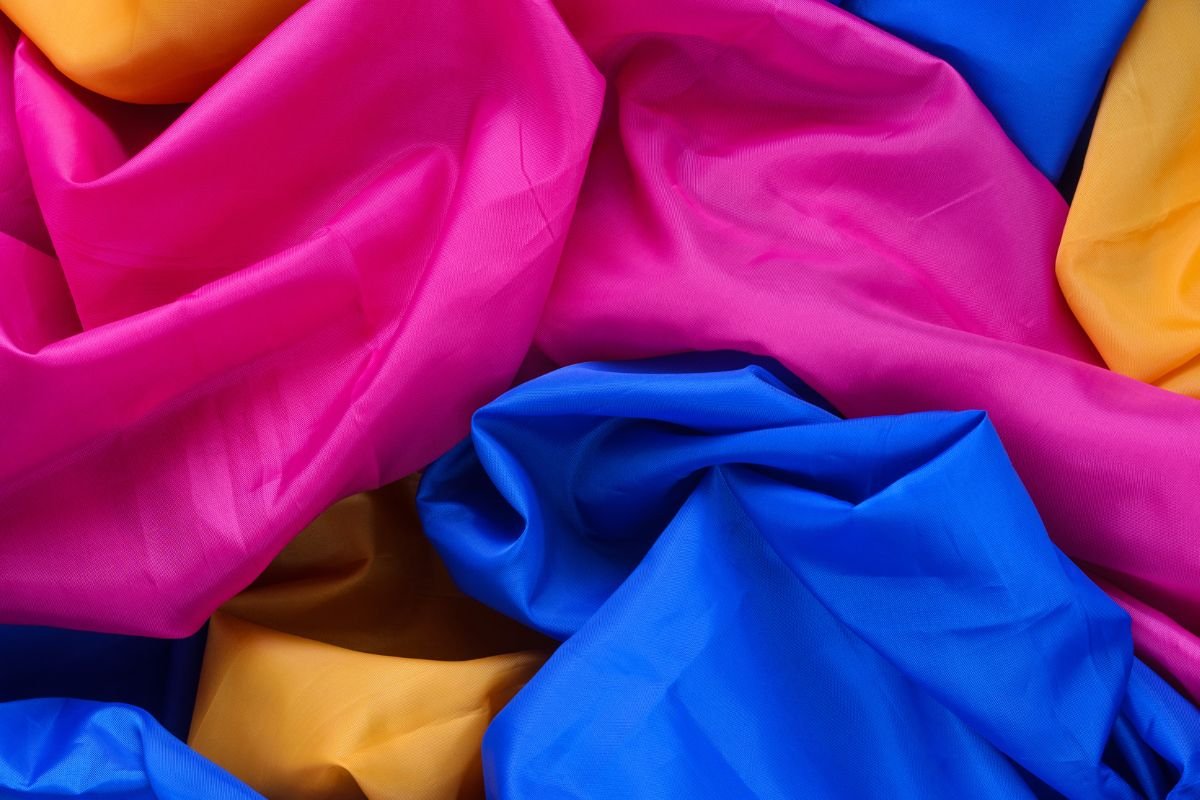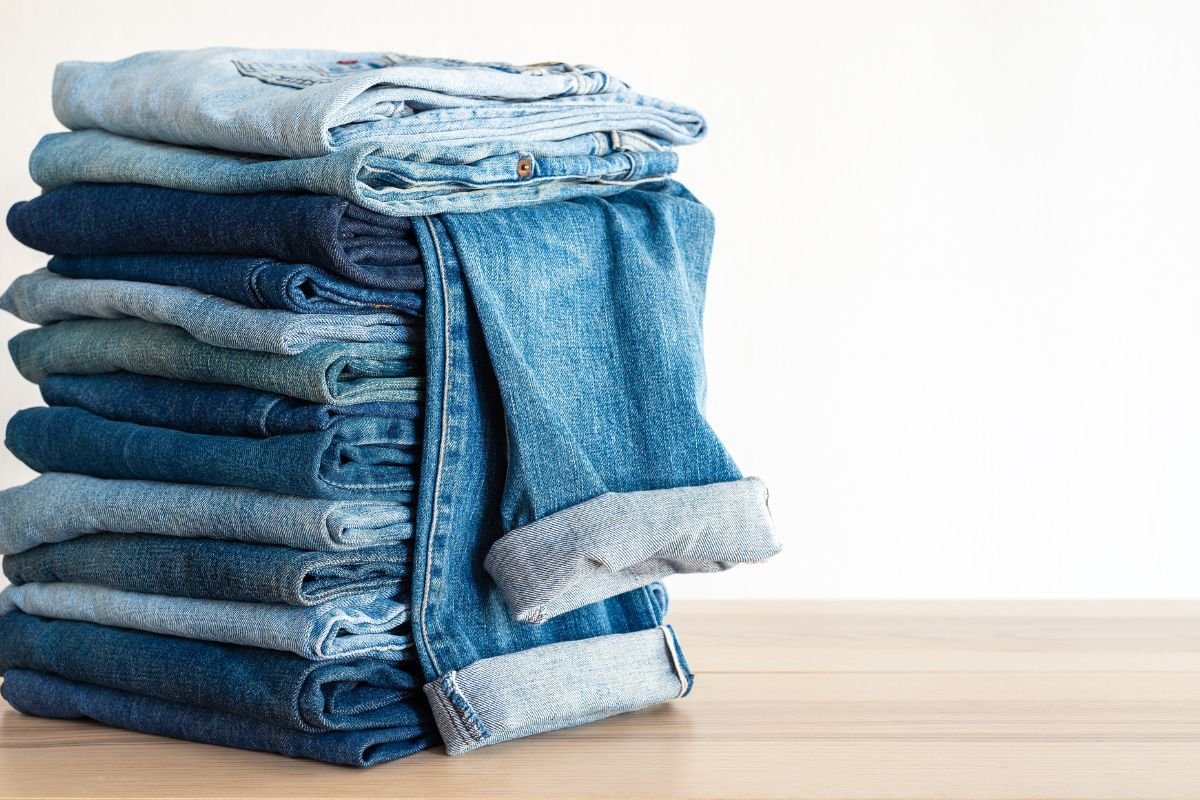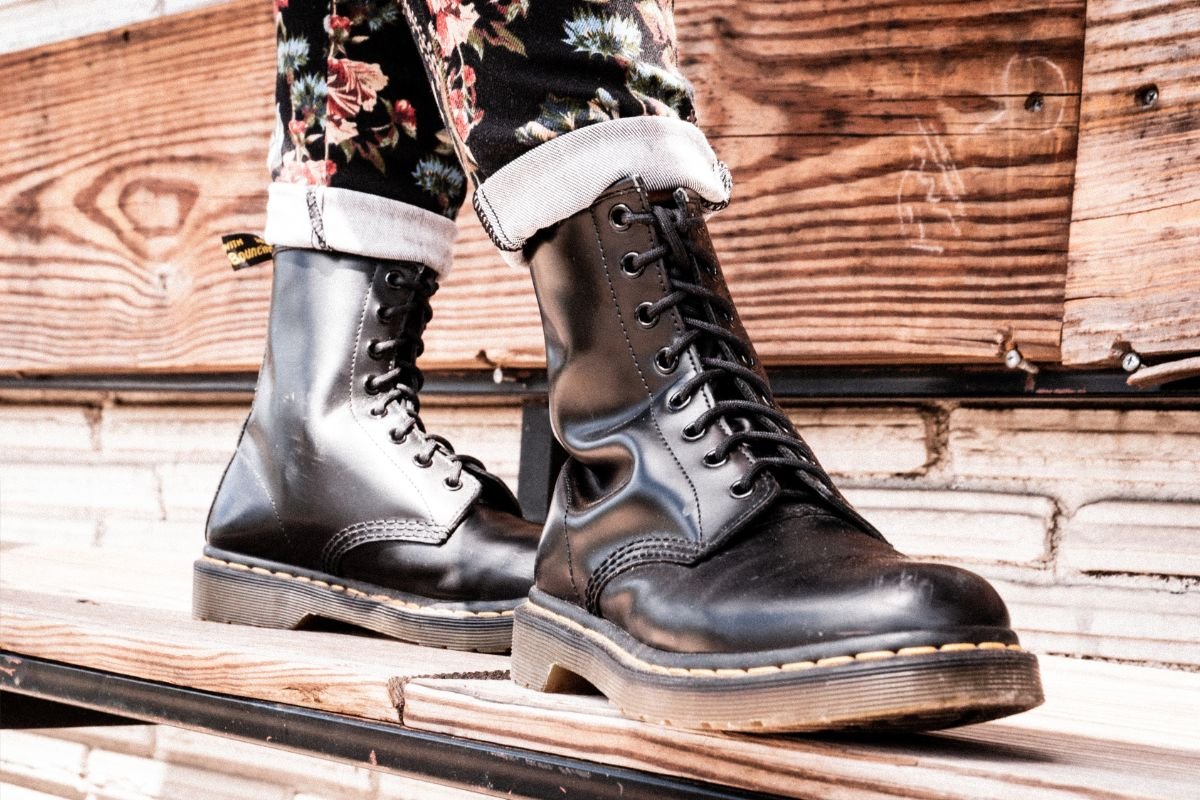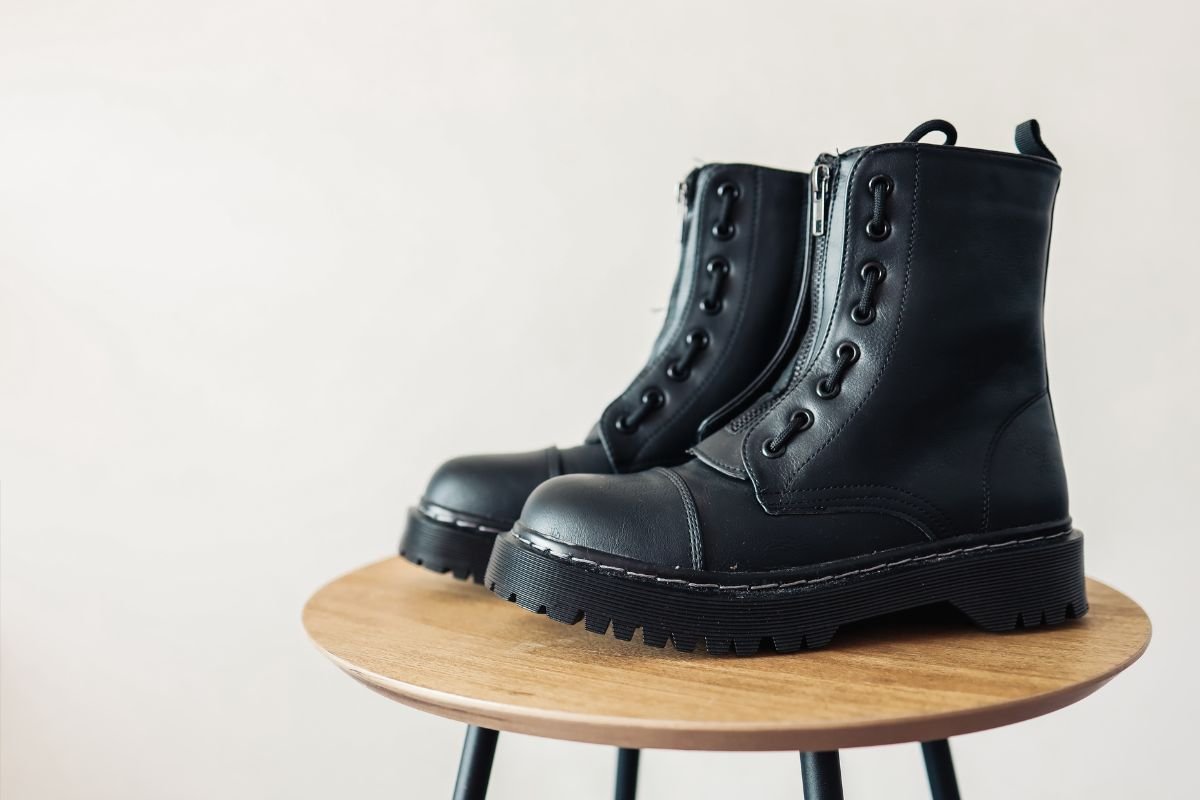Stretchy clothing is extremely popular, with yoga pants, leggings, and bike shorts worn frequently by athletic enthusiasts.

The stretchy quality seen in these garments is the result of elastane, a fiber sourced from petroleum that is known for its flexibility.
Most people know elastane by its other name, spandex. This word is an anagram of the term ‘expand’, the most prominent characteristic of elastane fibers.
You’ll learn more about elastane in this article, including what it is, how it’s made, and its effects on the environment.
Elastane: The Basics
Elastane is also called spandex or lycra. People usually call it spandex in North America, while the terms ‘lycra’ and ‘elastane’ are more popular in the UK, Europe, the Middle East, and Australia.
Elastane is made from synthetic fibers that are used to make lightweight, elastic clothing, like athletic wear. The material is made from long-chain polymers known as polyurethane.
Elastane contains a minimum of 85% polyurethane. These fibers can be stretched to a certain extent, returning to their original shape after they are released.
Elastane fibers are adaptable, lightweight, and stronger than rubber. Its chemical properties give the material the capability to stretch to 600% of its initial length.
These fibers are made from several polymer threads made from two types of segments. These are short rigid segments and long amorphous segments.
Their characteristics clarify how the fibers can stretch and rebound when let go.
When the fibers are stretched, the connections linking the rigid areas break. Once the fibers have reached their greatest length, the short rigid areas link to each other, while the long amorphous areas stay stretched.
Once the force stretching the fibers is let go, the amorphous portions rebound, relaxing the fibers in the process.
Elastane: A History
Elastane manufacturing began in World War 2.
During this period, rubber-based fibers, like latex, weren’t durable, strong, or lightweight enough.
Rubber was also a very significant material at this time, as it was needed to create different equipment, so its cost kept changing.
J.C. Shivers, a DuPont scientist, became determined to substitute rubber-based fibers.
Roughly ten years later, Shivers perfected these fibers in 1959. He initially called them FIber K, then changed the name later, calling it lycra.
DuPont began extensive elastane manufacturing in 1962. To this day, the company is still the number one elastane producer in the world.
How Is Elastane Made?
Elastane’s production process involves six steps and three main stages.
Polymer Reaction
The method begins with the creation of a prepolymer. This is done by mixing macro-glycol with a diisocyanate monomer. The advised ratio of these two substances is 1:2.
- As the dry spinning continues, the prepolymer reacts with the diamine to create a chain extension reaction.
- The remaining solution is mixed with a solvent to make it thinner, creating the spinning solution. The fluid is then pushed into fiber production cells.
Fiber Production
- The spinning fluid is pushed into a spinning cell which turns the solution into fibers.
- These fibers exit the cell by moving through a compressed air machine. A specific amount of the solid strands are then gathered to create a certain thickness. The spandex fibers tend to contain a lot of smaller ones that stick to each other as they are naturally tacky.
Final Treatment
- The fibers are processed with magnesium stearate, then moved through several rollers to be wound on a spool. The windup rate of the whole process can range from 300 miles to 500 miles each minute, though this varies depending on how thick the fibers are.
- After the spools are wound with fibers, the last package is made and sent to customers and textile companies.
Elastane Properties

Here are some of the advantages of elastane.
- Smooth, soft, and lightweight material.
- Prevents garments from sagging, helping them retain their shape
- Resists scratching and wear and tear
- Durable, strong, and stretchier than rubber
- Resists decay from lotions, perspiration, detergents, and body oils.
- Can be stretched repeatedly and returns to its initial form easily
- Can be dyed in different shades easily
Elastane Uses
Elastane is a multipurpose clothing material used to make different types of accessories and garments.
Examples include:
- Bodysuits: Wetsuits and leotards
- Pants: Yoga pants, leggings, ski pants, and skinny jeans
- Athletic wear: Cycling wear, exercise clothes, and swimwear
- Accessories: Socks, tights, gloves, and belts
Elastane’s Effects On The Environment
A lot of garments that are made with elastane cannot be recycled after they become shabby. Fabric blends that contain lycra are very hard to recycle.
Elastane is a factor that affects environmental pollution as it is full of toxic substances. The material has a similar chemical makeup to plastic and polyester, which also fill up landfills.
Elastane is made from petroleum-based fibers that use a lot of energy in their production, so it isn’t biodegradable.
Elastane is also full of microplastics that contribute to water pollution. These microplastics will eventually make their way to the ocean, affecting food chains in the process.
Is There A Solution For Environmental Problems Caused By Elastane?
San Diego company Genomatica has seen success transforming natural sugars created by microorganisms to BDO, a type of industrial plastic.
This plastic has the same characteristics as elastane. It is durable, elastic, and strong, so it is a good replacement for materials sourced from fossil fuels.
Things We Can Do
It’s hard to picture a world without elastane clothing, and it is unreasonable to expect everyone to stop wearing these garments.
This may sound like there is no hope, but there are things we can do to help in the meantime.
One of the main things we can do is prevent filling landfills with clothes. Instead of throwing clothes away, aim to donate them, sell, or gift them as hand-me-downs to your friends and family.
Being mindful of the clothes you buy can also help. Try to purchase quality clothes that you will wear a lot instead of trendy one-off items that will soon go out of season.
If everyone does their best to be more sustainable, we have a greater chance of protecting the environment from further damage.
The Bottom Line
Elastane is a multipurpose material that is known for its elastic properties. It’s used to make stretchy clothing, like athletic clothes and swimwear, as well as accessories, like tights, socks, and gloves.
Elastane may be useful, but it is very hard to recycle and is filling up landfills every day. It’s hard to see elastane production ending right now, but being more sustainable about our clothing practices can help protect the environment from further damage.
- 15 Amazing Vegan UGG Boots Not To Miss Out On - November 23, 2022
- 15 Vegan Running Shoes To Brighten Up Your Wardrobe - November 23, 2022
- 8 Best VEJA Vegan Sneakers To Buy Today - November 22, 2022

